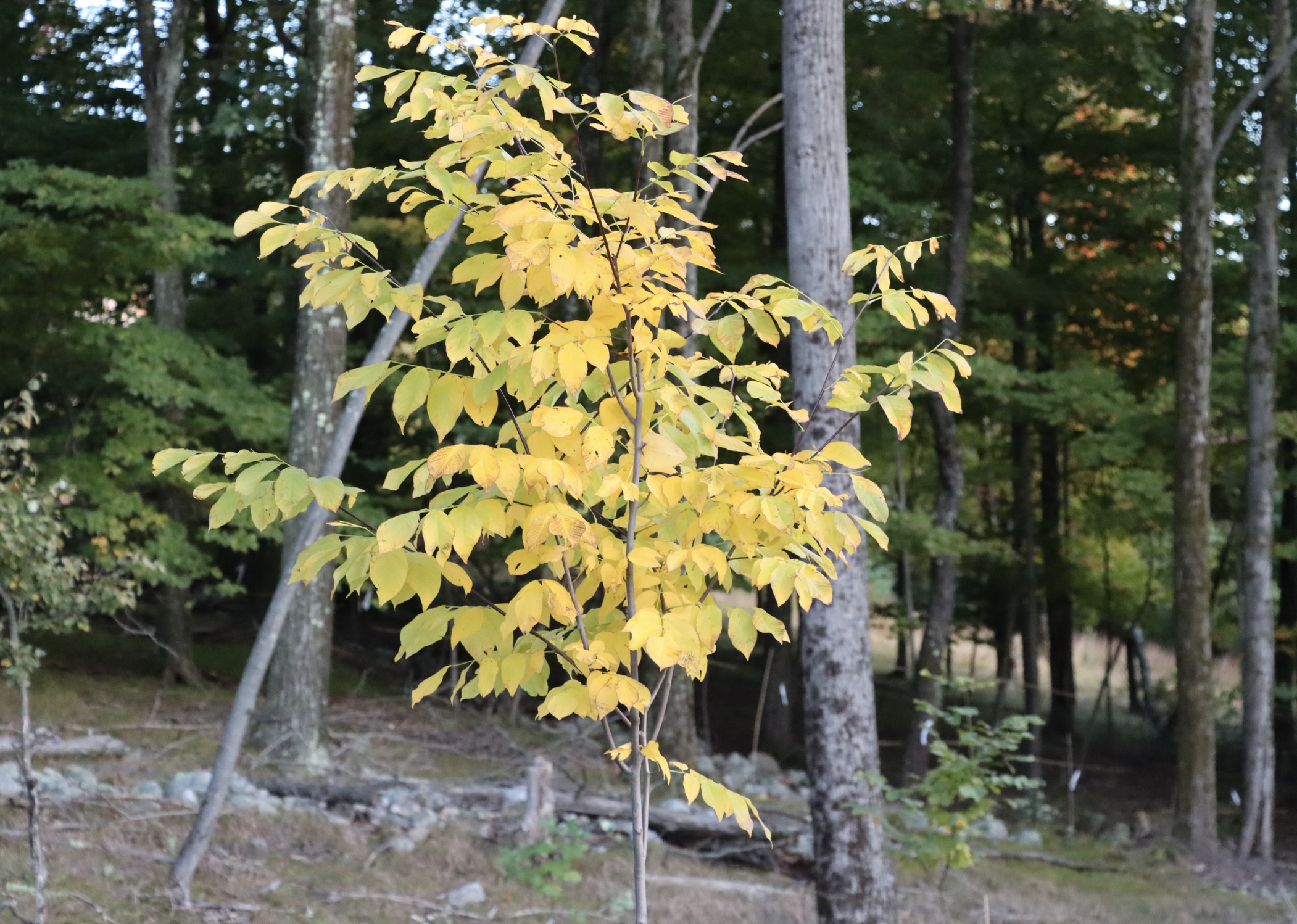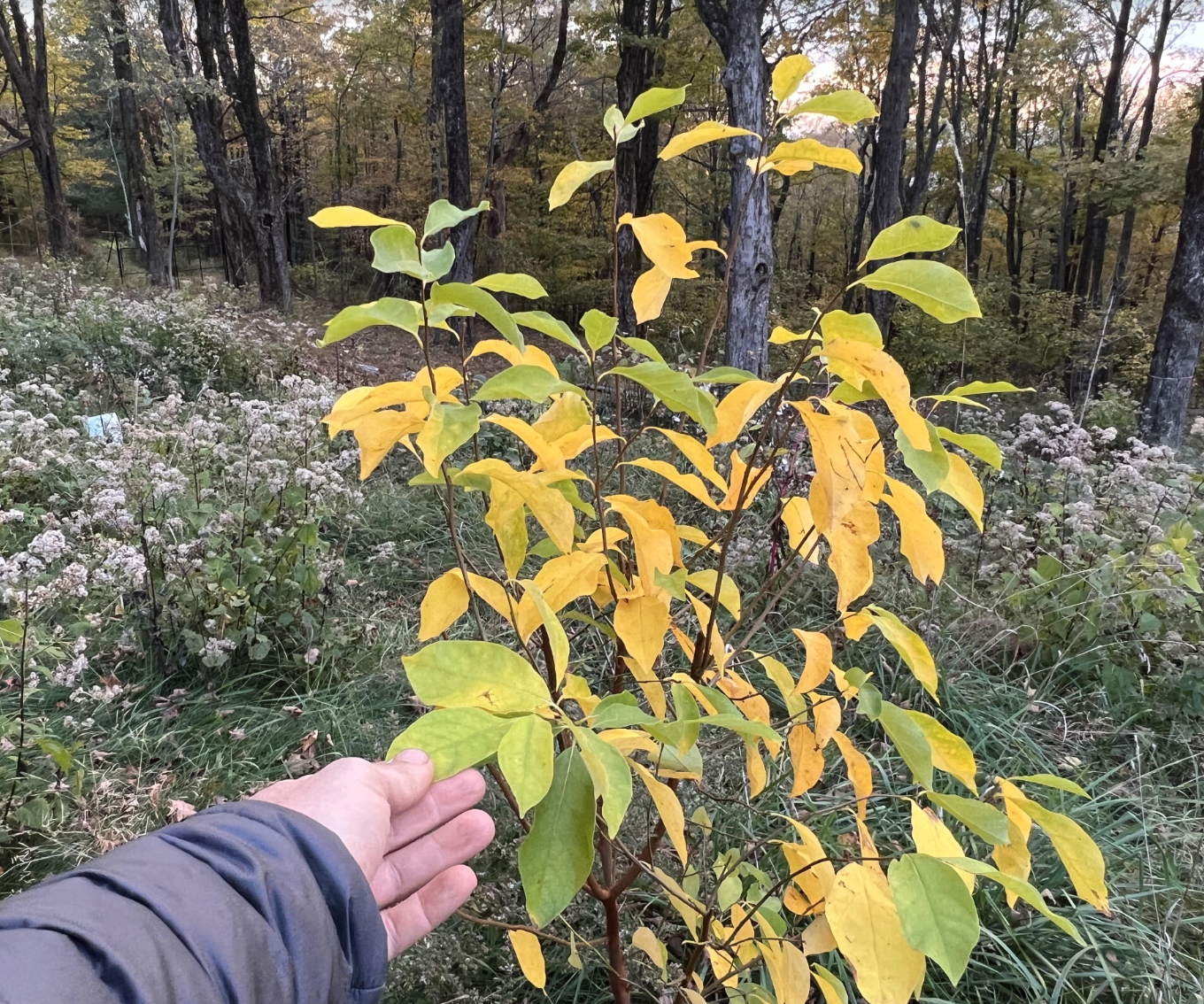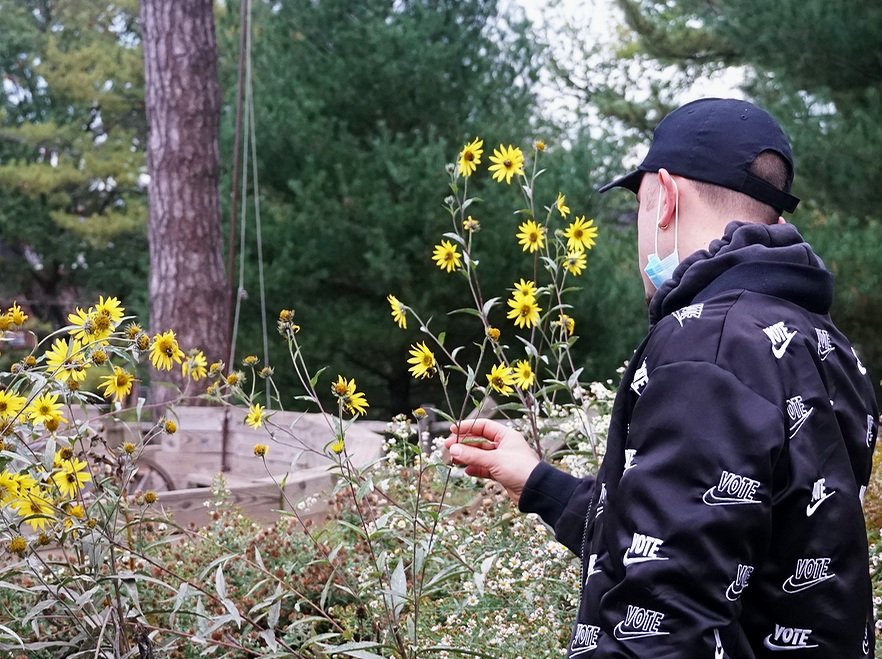by Mackenzie Younger
Fir tree
No Christmas is complete without the Christmas tree and there could be no better option for the holidays than the fir tree, specifically the balsam fir (Abies balsamea) or the Fraser fir (Abies fraseri).
These two iconic, native Christmas trees have a wonderful woodsy smell and an ability to hold their needles longer than other conifers.
One winter, an old man from the Catskill mountains, whose crops failed in the following fall, came down to New York City with a carriage filled with balsam fir trees that he cut. Because of his desperate financial situation, he hoped people would give him money for the trees and to his surprise — they did! This began what would become the massive Christmas tree business in the United States.
The Fraser fir is the southern relative of the balsam fir, limited to the ‘sky islands’ of the Appalachian mountains, which are the highest elevations of Tennessee and North Carolina, where the tree has been trapped since the last ice age. This tree is becoming endangered in the wild but is quite common as a Christmas tree on Christmas farms.
When it comes to growing these trees in a garden, park or as inventory for a Christmas tree farm; they require full sun to achieve that classical, dense and pyramidal Christmas shape. While both trees do best in cooler climates Frasier for is more heat tolerant and is capable of surviving into zone 7. If grown in warmer climates, heavily mulching around the roots of the trees is recommended.
2. American Holly
American Holly | Ilex opaca | Philadelphia, PA | Photo: Mackenzie Younger
While people in the northern states and the mountains are lucky to have the ideal climate for fir trees, those in the southern states are lucky to have the ideal climate for the American Holly (Ilex opaca).
American holly like the fir trees is a quintessential Christmas plant. Although not suited for indoor Christmas tree uses, American Holly makes for a fantastic landscape ornamental and for cuttings to make wreaths, or other festive decorations.
This broadleaf evergreen thrives in the hotter, humid south and plays an important role in the aesthetic and ecological landscape — attracting both people and wildlife.
American holly works very well up against structures, as a specimen or in groups, where the mass of evergreens provide shelter for animals, especially song birds during winter storms.
To get berries you need both a female and a male tree close by, for cross pollination. When planting, it is recommended that you amend the soil with compost, bark mulch and acidifier. It likes well drained, acidic and often sandy soil. Once established, American holly can be very hardy and does well in both full sun or part shade.
3. Christmas Fern
Christmas Fern | Polystichum acrostichoides | Shawangunk Mountains, NY | Photo: Mackenzie Younger
Do you think this is an appropriate plant for our list? You bet it is! In fact, if Santa had a favorite fern this would be it! The Christmas Fern (Polystichum acrostichoides).
Christmas Fern is one of several evergreen ferns native to the eastern United States, inhabiting moist forests and north / eastern facing wooded slopes. Unlike most other ferns, Christmas fern has very dark waxy leaves, which remain on the plant throughout the winter, making it stand out in the cold months.
Christmas fern makes for a wonderful addition to any woodland or shaded garden in need of winter interest. The fern also does well in containers and can survive in partial sun if the soil is moist and rich with organic material.
A great companion plant to consider along with the Christmas fern is the evergreen wood fern (Ardryopteris marginalis). We suggest planting Christmas ferns in groups along pathways or as an understory plant for large shrubs.
4. American Mistletoe
Did you know the United States has two native species of mistletoe?
Most people associate mistletoe as a Christmas ornament hung in doorways which people kiss under… but few people associate it with what it really really is; a evergreen hemi-parasitic sub-shrub. In fact, the American mistletoe’s scientific name is Phoradendron, which means “thief of the tree".
If you’re from the south you’ve probably seen American mistletoe growing on branches of hardwood trees, especially in the winter months since mistletoe is evergreen and really stands out in the canopy of deciduous trees. Because of this evergreen nature mistletoe became a popular Christmas plant.
American mistletoe is an attractive plant but is never grown in gardens or sold at nurseries because it is often seen as a pest, although they rarely hurt their host trees and actually play an important role ecologically with flowers that pollinator enjoy and berries that birds love!
Nonetheless, American mistletoe is a unique plant associated with Christmas and a fun addition to this list. We urge you to look more into this bizarre, rarely discussed native plant!
5. Winterberry
If you don’t have room for the large growing American holly we suggest you try its relative, the winterberry (Ilex verticillata) to brighten up the holiday season! This shrub produces iconic red berries that have become very commonplace in Christmas decorations.
Winterberry naturally occurs in wetlands from Maine south to Alabama, making it very climate versatile and will happily adapt to most garden conditions, although amending the soil like one would for American holly can help.
Like all hollies a male specimen is needed for cross pollination, in order for the winterberry to produce berries. For example use the male cultivar "Southern Gentlemen," in combination with the female cultivar ‘Winter Red’ to ensure fruit production. On males is suitable for half a dozen or more females.
Winterberry is a great option to place near a bird bath or bird feeder, so come Christmas time, you can see birds playing on the branches before diving to and from the feeders. This will create what will truly be a Christmas card image!
Later in the winter, these same birds will eat the berries, which serve as a very important food source when little else is available around in the landscape.
Winterberry is one of the most popular woody ornamentals commercially grown for winter bouquets, and we highly recommend it in your garden for winter interest!
6. Red Osier dogwood
Like winterberry, red osier dogwood (Cornus sericea) is primarily a wetland species but can adapt very well to garden conditions too. Unlike winterberry, red osier dogwoods native range doesn't extend north to south but rather east to west, across the northern United States, from New England to California which is rather unique.
This shrub has vivid red stems, which make for a memorable addition to the winter landscape. The stems are commonly cut and sold as woody ornamentals for winter bouquets and holiday displays alongside winterberry stems.
Like all members of the dogwood family, red osier dogwood has white flowers in the spring and produces berries + great red / burgundy leaf color in the fall.
Try combining red osier dogwood with winterberry to amp up the scarlet hues in your garden during the holiday season. They can be planted in wetland settings, along ponds or in a regular garden bed. They can be used as a single specimen shrub or in mass plantings as means to increase the visual effect of the plants awesome red stems.
7. American Wintergreen
American Wintergreen (Gaultheria procumbens) is one of the best native plants to display during the holiday season. Gaultheria is an elegant, small in stature, sub-shrub, which has the habit of spreading like a ground cover. It has hard waxy evergreen leaves and bright red berries, almost as if it was designed by Santa himself!
Wintergreen also amazes those who interact with it, in that when you split a leaf, you're immediately hit with an intense, fresh and pungent mint fragrance, similar to wintergreen gum that most people are familiar with. This is the plant responsible for that exact aroma and flavor.
Wintergreen naturally occurs in acidic forest floors or scrublands, and is almost always accompanied by mountain laurel and or other heath shrubs, such as huckleberry.
Like Christmas fern, this evergreen plant makes a great option for container plantings with moss. Due to its low growth habits, it's best used as an understory plant, with limited competition.
Winter green will always entertain your garden guests and makes for a top notch Christmas plant!
8. Arborvitae
The American arborvitae (Thuja occidentalis) is a majestic evergreen tree which naturally occurs in moist forested areas throughout the north east, as well as lakes shores and along rock outcrops. If you are not from the great lakes region or interior New England, you may never have seen this tree growing in the wild. That said, most people are familiar with this tree as a common privacy screen in suburban areas.
American arborvitae is a versatile tree, which makes it ideal for the landscaping industry. Often it is simply referred to as arborvitae, making it easily mistaken and or mixed up with the western arborvitae (Thuja plicata) or other asian verities.
What most people don’t realize is that the American arborvitae sold at your local nursery can live over a thousand years! Meaning that the hedge row you planted to block out your neighbor will, in theory… out live you, your neighbor, the neighborhood and even society — if left undisturbed.
Arborvitae stems smell fantastic and while they are not well suited as Christmas trees indoors, they make wonderful cut stems for wreaths and other holiday displays.
That said, as they are relatively slow growing, unless you have a lot of them in your landscape, it is best to enjoy them for their evergreen presence outdoors rather than cutting the branches. Birds need trees like the Arborvitae to hide in during winter snow storms!
9. Pine
White pine | Pinus strobus | Shawangunk Mountains, New York | Photo: Mackenzie Younger
Pines, like arborvitae, are ideal for woody cuttings used for wreaths and other Christmas decorations. Pines are a versatile and diverse group of trees, and some of our favorites to work with, especially for winter interest!
Up north, the white pine (Pinus strobus) is the most commonly found pine, and works well in most landscapes, either as a specimen tree or to create privacy screens. White pine is a great choice for those who want a fast growing evergreen but beware, white pines get very big.
Down south, Virginia Pine (Pinus virginiana) is often used as an alternative to the traditional Christmas tree because it can be pruned to resemble the shape of fir trees. This makes Virginia pine a great candidate for hedge rows in full sun or zen garden applications which rely on heavy pruning.
10. Juniper
Last on our list is Juniper, although there are soo many more native plants that are great for winter interest.
Here in the eastern United States, we have several species of Juniper, all of which have fragrant evergreen foliage. These include the low growing Juniper, such as Juniperus communis and Juniperus horizontalis, which are awesome ground covers, used commonly in commercial landscapes but also work beautifully in rock gardens, along pathways and in containers. You will love the natural cascading effect this plant brings to your space.
Another member of the juniper family is the eastern red cedar, (Juniperus virginiana). This is a heat tolerant evergreen and like Virginia pine, was once used as a Christmas tree alternative in the south.
Female eastern red cedars produce blue berries that birds love and add aesthetic interest to the plant, especially as cut stems for wreaths.
The berries were once used to create scented candles and of course, the most famous product from cedar berries is jin — giving that spirit its unique and recognizable flavor.






















































